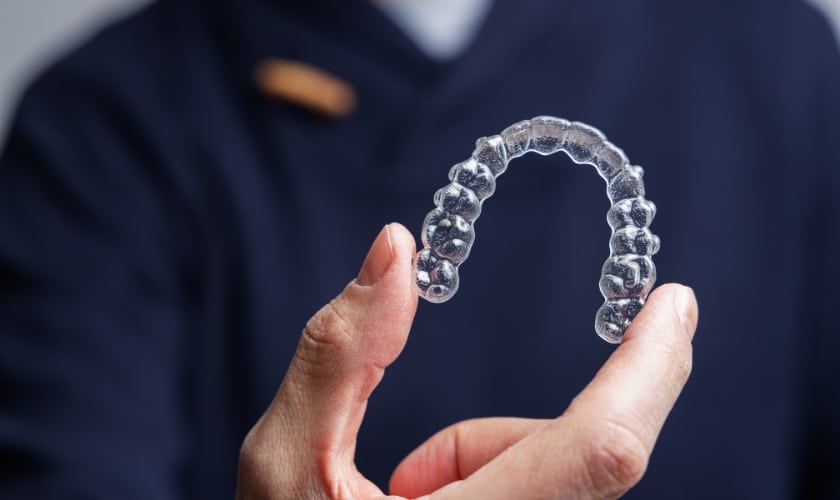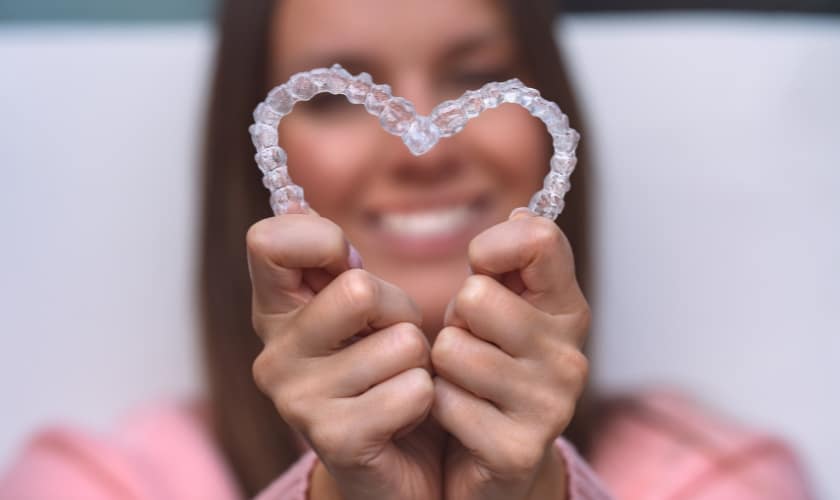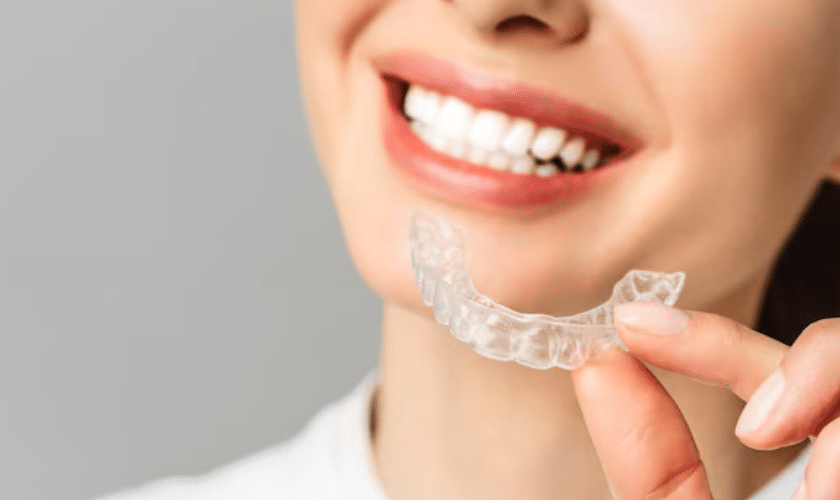
By Gentle Touch Dentistry Richardson
Welcome to our comprehensive guide on Invisalign treatment and its remarkable ability to fix bite issues and improve jaw alignment. In this article, we will explore the different types of bite issues and their consequences, provide an overview of how Invisalign works, highlight its benefits over traditional braces, and showcase real-life success stories. If you’re seeking an effective and discreet solution for your dental concerns, join us as we dive into the world of Invisalign and discover the transformative power it holds for your smile and oral health.
Understanding Bite Issues
- Bite issues refer to misalignments or irregularities in how the upper and lower teeth fit together when biting or chewing.
- The three main bite issues are overbite, underbite, and crossbite.
a. Overbite: Occurs when the upper front teeth overlap significantly with the lower front
teeth.
b. Underbite: This happens when the lower teeth protrude before the upper teeth.
c. Crossbite: Involves misalignment of the upper and lower teeth in a lateral position.
- Bite issues can have various causes, including genetics, improper jaw development, habits like thumb-sucking or tongue-thrusting, and trauma.
- These bite issues can lead to several consequences:
a. Difficulty in biting, chewing, and speaking properly.
b. Increased risk of tooth decay, gum disease, and TMJ disorders.
c. Aesthetic concerns impacting self-confidence and facial symmetry.
- It’s crucial to address bite issues early on to prevent further complications and improve overall oral health.
Invisalign: How It Works
- Invisalign treatment involves using custom-made aligners, which are transparent and virtually invisible.
- The process starts with a consultation where your Invisalign dentist will create a personalized treatment plan for you.
- Advanced 3D imaging technology creates a digital representation of your teeth and jaw, allowing for precise planning and visualization of the treatment process.
- Based on this digital model, a series of clear aligners are custom-made to move your teeth into their desired position gradually.
- You will wear each set of aligners for about two weeks when they exert gentle pressure to shift your teeth.
- As you progress through the aligner series, your teeth gradually move closer to their final position.
- Throughout the treatment, typically lasting several months to a year, you will visit your Invisalign dentist periodically to monitor progress and receive new aligners.
- Once the treatment is complete, you may need to wear retainers to maintain the alignment achieved.
- Invisalign offers additional benefits such as easy removal for eating, brushing, and flossing, as well as the absence of metal brackets or wires for greater comfort.
Correcting Bite Issues With Invisalign
- Invisalign aligners are highly effective in correcting bite issues, including overbite, underbite, and crossbite.
- The custom-made aligners exert gentle and controlled forces on the teeth, gradually shifting them into their correct positions.
- For overbite correction, the aligners will help move the upper front teeth back while aligning the lower teeth accordingly.
- Underbite correction involves aligning the lower front teeth to fit properly behind the upper front teeth.
- In the case of crossbites, the aligners assist in aligning the upper and lower teeth to achieve a harmonious fit.
- The treatment progress is closely monitored by the Invisalign dentist, who will provide new sets of aligners as needed.
- In some cases, additional attachments or buttons may be used along with the aligners to aid in specific tooth movements.
- Patients may experience mild discomfort or pressure during the initial days of wearing each new set of aligners, but it will subside as the teeth adjust.
- Regular check-ups throughout the treatment ensure that the bite issues are corrected effectively and efficiently.
Invisalign Vs. Other Treatment Options
- Invisalign offers several advantages over traditional braces, such as improved aesthetics due to clear, virtually invisible aligners.
- Unlike traditional braces, Invisalign aligners are removable, allowing for easier and more convenient eating, brushing, and flossing.
- Invisalign aligners are made from smooth plastic, eliminating the discomfort and irritation often associated with metal brackets and wires.
- The treatment time for Invisalign is generally comparable to traditional braces, depending on the case’s complexity.
- Invisalign aligners require less frequent dental visits compared to adjustments needed for traditional braces.
- For severe bite issues or skeletal discrepancies, jaw surgery may be necessary. In such cases, Invisalign can be used as a pre-surgical orthodontic treatment to align the teeth before the surgical procedure.
- Invisalign is not suitable for everyone, and the best treatment option depends on the specific needs and goals of each individual. Consulting with an Invisalign dentist will help determine the most appropriate treatment plan.
- Invisalign offers flexibility and discretion in correcting bite issues, making it an attractive choice for those seeking a more comfortable and aesthetically pleasing orthodontic solution.
Frequently Asked Questions
- How long does it take to get Invisalign?
– The length of Invisalign therapy depends on the complexity of the case, however it
commonly spans from 6 to 18 months.
- Are the aligners noticeable?
– No, Invisalign aligners are constructed of clear, translucent material that makes them
almost undetectable. The majority of folks will not even notice you are wearing them.
- Can I remove the aligners to eat?
– Yes, one of the key advantages of Invisalign is that the aligners can be easily removed for
eating, allowing you to enjoy your favorite foods without restrictions.
- How often should I wear the aligners?
– For best results, aligners should be worn for 20 to 22 hours each day. They should be
removed only for eating, drinking (excluding water), brushing, and flossing.
- Will Invisalign treatment be painful?
– While some patients may experience temporary discomfort or pressure when switching to
new aligners, it is typically mild and subsides as the teeth adjust.
- Can Invisalign fix severe bite issues?
– Invisalign can address many bite issues, but severe cases may require
alternative treatments such as jaw surgery. Your Invisalign dentist can assess your
individual condition and advise you on the best course of action.
- How do I clean the aligners?
– Aligners can be cleaned using a soft-bristle toothbrush and lukewarm water. Specialized
cleaning crystals or solutions may also be recommended by your Invisalign dentist.
- Does insurance cover Invisalign?
– Invisalign may be covered in part by dental insurance policies that include orthodontic
treatment. It’s best to check with your insurance provider to understand the extent of
coverage.
Invisalign is a discreet, efficient treatment for bite issues and jaw alignment. It uses custom-made, clear aligners, providing a comfortable, virtually invisible alternative to traditional braces. Patients can enjoy easily removable aligners, maintain oral hygiene, and improve aesthetics.






